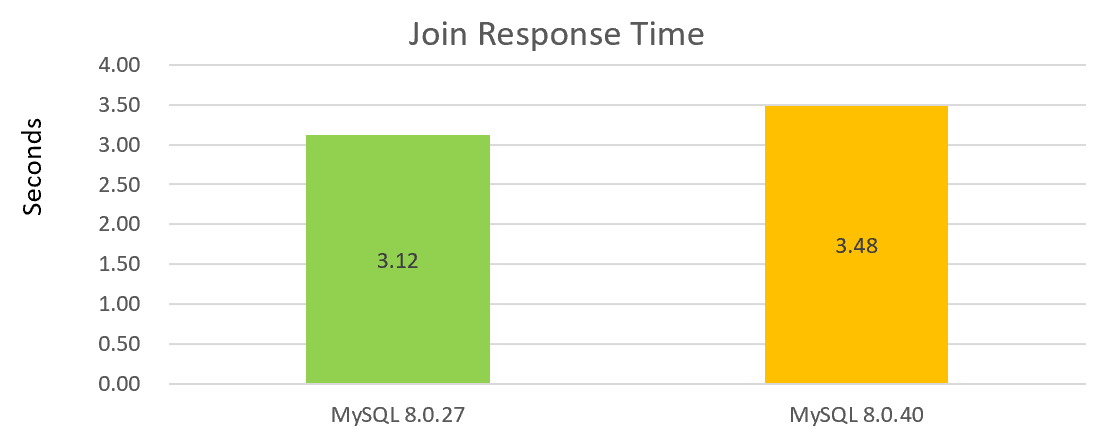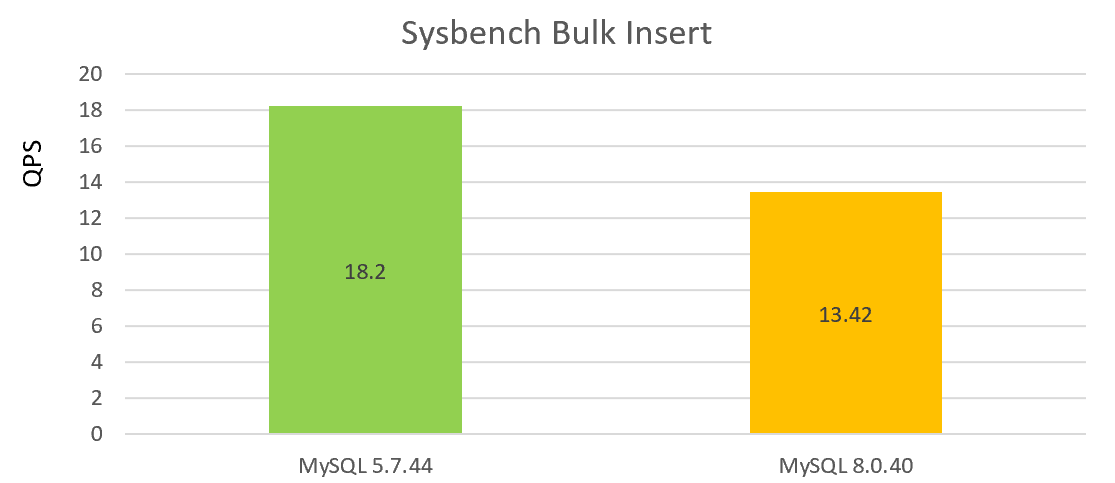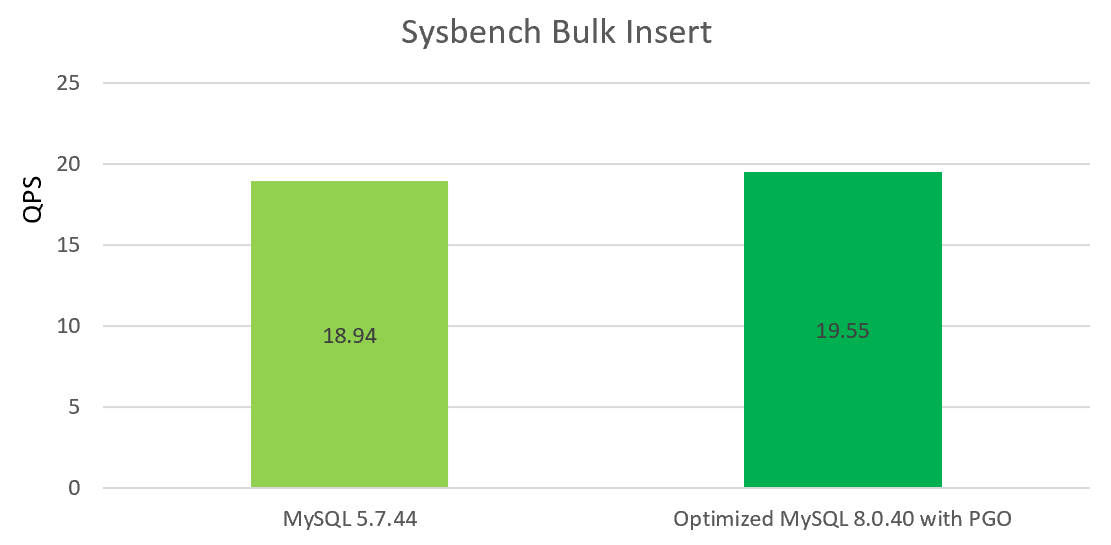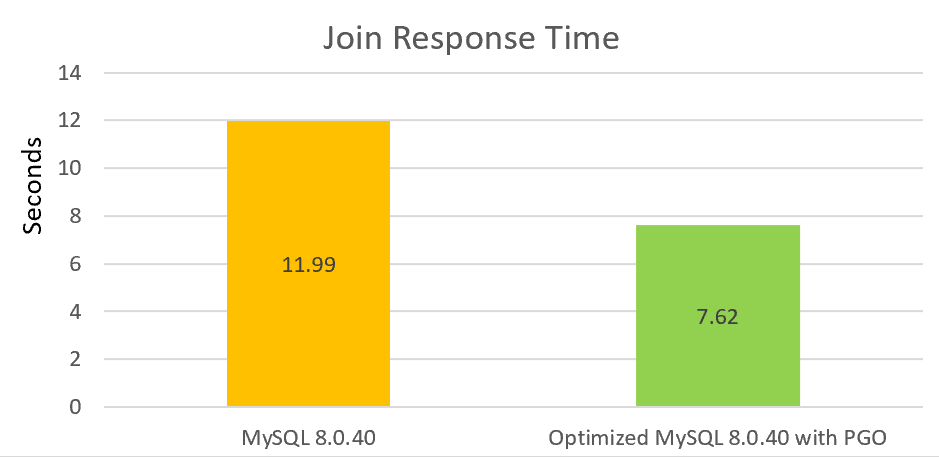Users tend to notice a decline in low-concurrency performance more easily, while improvements in high-concurrency performance are often harder to perceive. Therefore, maintaining low-concurrency performance is crucial, as it directly affects user experience and the willingness to upgrade [1].
According to extensive user feedback, after upgrading to MySQL 8.0, users have generally perceived a decline in performance, particularly in batch insert and join operations. This downward trend has become more evident in higher versions of MySQL. Additionally, some MySQL enthusiasts and testers have reported performance degradation in multiple sysbench tests after upgrading.
Can these performance issues be avoided? Or, more specifically, how should we scientifically assess the ongoing trend of performance decline? These are important questions to consider.
Although the official team continues to optimize, the gradual deterioration of performance cannot be overlooked. In certain scenarios, there may appear to be improvements, but this does not mean that performance in all scenarios is equally optimized. Moreover, it’s also easy to optimize performance for specific scenarios at the cost of degrading performance in other areas.
The Root Causes of MySQL Performance Decline
In general, as more features are added, the codebase grows, and with the continuous expansion of functionality, performance becomes increasingly difficult to control.
MySQL developers often fail to notice the decline in performance, as each addition to the codebase results in only a very small decrease in performance. However, over time, these small declines accumulate, leading to a significant cumulative effect, which causes users to perceive a noticeable performance degradation in newer versions of MySQL.
For example, the following figure shows the performance of a simple single join operation, with MySQL 8.0.40 showing a performance decline compared to MySQL 8.0.27:

The following figure shows the batch insert performance test under single concurrency, with the performance decline of MySQL 8.0.40 compared to version 5.7.44:

From the two graphs above, it can be seen that the performance of version 8.0.40 is not good.
Next, let’s analyze the root cause of the performance degradation in MySQL from the code level. Below is the PT_insert_values_list::contextualize function in MySQL 8.0:
The corresponding PT_insert_values_list::contextualize function in MySQL 5.7 is as follows:
From the code comparison, MySQL 8.0 appears to have more elegant code, seemingly making progress.
Unfortunately, many times, it is precisely the motivations behind these code improvements that lead to performance degradation. The MySQL official team replaced the previous List data structure with a deque, which has become one of the root causes of the gradual performance degradation. Let’s take a look at the deque documentation:
std::deque (double-ended queue) is an indexed sequence container that allows fast insertion and deletion at both its
beginning and its end. In addition, insertion and deletion at either end of a deque never invalidates pointers or
references to the rest of the elements.
As opposed to std::vector, the elements of a deque are not stored contiguously: typical implementations use a sequence
of individually allocated fixed-size arrays, with additional bookkeeping, which means indexed access to deque must
perform two pointer dereferences, compared to vector's indexed access which performs only one.
The storage of a deque is automatically expanded and contracted as needed. Expansion of a deque is cheaper than the
expansion of a std::vector because it does not involve copying of the existing elements to a new memory location. On
the other hand, deques typically have large minimal memory cost; a deque holding just one element has to allocate its
full internal array (e.g. 8 times the object size on 64-bit libstdc++; 16 times the object size or 4096 bytes,
whichever is larger, on 64-bit libc++).
The complexity (efficiency) of common operations on deques is as follows:
Random access - constant O(1).
Insertion or removal of elements at the end or beginning - constant O(1).
Insertion or removal of elements - linear O(n).
As shown in the above description, in extreme cases, retaining a single element requires allocating the entire array, resulting in very low memory efficiency. For example, in bulk inserts, where a large number of records need to be inserted, the official implementation stores each record in a separate deque. Even if the record content is minimal, a deque must still be allocated. The MySQL deque implementation allocates 1KB of memory for each deque to support fast lookups.
The implementation is the same as classic std::deque: Elements are held in blocks of about 1 kB each.
The official implementation uses 1KB of memory to store index information, and even if the record length is not large but there are many records, the memory access addresses may become non-contiguous, leading to poor cache friendliness. This design was intended to improve cache friendliness, but it has not been fully effective.
It is worth noting that the original implementation used a List data structure, where memory was allocated through a memory pool, providing a certain level of cache friendliness. Although random access is less efficient, optimizing for sequential access to List elements significantly improves performance.
During the upgrade to MySQL 8.0, users observed a significant decline in batch insert performance, and one of the main causes was the substantial change in underlying data structures.
Additionally, while the official team improved the redo log mechanism, this also led to a decrease in MTR commit operation efficiency. Compared to MySQL 5.7, the added code significantly reduces the performance of individual commits, even though overall write throughput has been greatly improved.
Let’s examine the core execute operation of MTR commit in MySQL 5.7.44:
Let’s examine the core execute operation of MTR commit in MySQL 8.0.40:
By comparison, it is clear that in MySQL 8.0.40, the execute operation in MTR commit has become much more complex, with more steps involved. This complexity is one of the main causes of the decline in low-concurrency write performance.
In particular, the operations m_impl->m_log.for_each_block(write_log) and log_wait_for_space_in_log_recent_closed(*log_sys, handle.start_lsn) have significant overhead. These changes were made to enhance high-concurrency performance, but they came at the cost of low-concurrency performance.
The redo log’s prioritization of high-concurrency mode results in poor performance for low-concurrency workloads. Although the introduction of innodb_log_writer_threads was intended to mitigate low-concurrency performance issues, it does not affect the execution of the above functions. Since these operations have become more complex and require frequent MTR commits, performance has still dropped significantly.
Let’s take a look at the impact of the instant add/drop feature on performance. Below is the rec_init_offsets_comp_ordinary function in MySQL 5.7:
The rec_init_offsets_comp_ordinary function in MySQL 8.0.40 is as follows:
From the above code, it is clear that with the introduction of the instant add/drop column feature, the rec_init_offsets_comp_ordinary function has become noticeably more complex, introducing more function calls and adding a switch statement that severely impacts cache optimization. Since this function is called frequently, it directly impacts the performance of the update index, batch inserts, and joins, resulting in a major performance hit.
Moreover, the performance decline in MySQL 8.0 is not limited to the above; there are many other areas that contribute to the overall performance degradation, especially the impact on the expansion of inline functions. For example, the following code affects the expansion of inline functions:
According to our tests, the ib::fatal statement severely interferes with inline optimization. For frequently accessed functions, it is advisable to avoid statements that interfere with inline optimization.
Next, let’s look at a similar issue. The row_sel_store_mysql_field function is called frequently, with row_sel_field_store_in_mysql_format being a hotspot function within it. The specific code is as follows:
The row_sel_field_store_in_mysql_format function ultimately calls row_sel_field_store_in_mysql_format_func.
The row_sel_field_store_in_mysql_format_func function cannot be inlined due to the presence of the ib::fatal code.
Frequently called inefficient functions, executing tens of millions of times per second, can severely impact join performance.
Let’s continue to explore the reasons for performance decline. The following official performance optimization is, in fact, one of the root causes of the decline in join performance. Although certain queries may be improved, they are still some of the reasons for the performance degradation of ordinary join operations.
MySQL’s issues go beyond these. As shown in the analyses above, the performance decline in MySQL is not without cause. A series of small problems, when accumulated, can lead to noticeable performance degradation that users experience. However, these issues are often difficult to identify, making them even harder to resolve.
The so-called ‘premature optimization’ is the root of all evil, and it does not apply in MySQL development. Database development is a complex process, and neglecting performance over time makes subsequent performance improvements significantly more challenging.
Solutions to Mitigate MySQL Performance Decline
The main reasons for the decline in write performance are related to MTR commit issues, instant add/drop columns, and several other factors. These are difficult to optimize in traditional ways. However, users can compensate for the performance drop through PGO optimization. With a proper strategy, the performance can generally be kept stable.
For batch insert performance degradation, our open-source version [2] replaces the official deque with an improved list implementation. This primarily addresses memory efficiency issues and can partially alleviate performance decline. By combining PGO optimization with our open-source version, batch insert performance can approach that of MySQL 5.7.

Users can also leverage multiple threads for concurrent batch processing, fully utilizing the improved concurrency of the redo log, which can significantly boost batch insert performance.
Regarding update index issues, due to the inevitable addition of new code, PGO optimization can help mitigate this problem. Our PGO version [2] can significantly alleviate this issue.
For read performance, particularly join performance, we have made substantial improvements, including fixing inline issues and making other optimizations. With the addition of PGO, join performance can be increased by over 30% compared to the official version.

We will continue to invest time in optimizing low-concurrency performance. This process is long but involves numerous areas that need improvement.
The open-source version is available for testing, and efforts will persist to improve MySQL performance.
References
[1] Bin Wang (2024). The Art of Problem-Solving in Software Engineering: How to Make MySQL Better.
Source:
https://dzone.com/articles/mysql-80-performance-degradation-analysis













